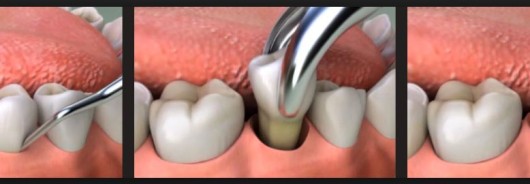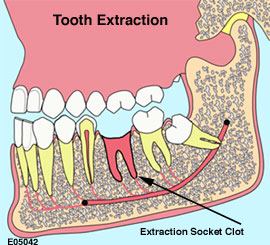
Extraction & Oral Surgery

While many people will have no trouble with their wisdom teeth, these teeth are often removed to prevent more serious issues like an abscess. These teeth generally begin to surface in the late teens to early 20s, and many times, they become impacted as they develop, growing sideways into the other teeth or angled forward.Wisdom teeth may erupt from the gumline or may still be set in the jaw. Teeth that are only partially erupted may present other issues as these teeth are difficult to clean and care for. Extractions are typically handled by an oral and maxillofacial surgeon on an outpatient basis. Most extractions are done as a preventative measure to safeguard against changes in the alignment of the teeth during orthodontics or more serious complications.
Types of Oral Surgery
Oral surgery is typically performed when the patient is young because the roots have not yet set in the jaw. Once the teeth are anchored, extraction becomes more difficult and requires a longer recovery time.
Simple Extraction:
During a simple extraction, the dentist or surgeon will apply a local anesthetic. This will numb the area but will not render the patient unconscious. The tooth will then be lifted using an elevator and removed from the mouth with forceps. The attending dentist will do this process slowly so as not to break the tooth during extraction. This kind of extraction is performed for those whose teeth have already erupted.
Surgical Extraction:
During a surgical extraction, the dentist may administer an IV anesthetic, which will render the patient relaxed but conscious. The surgeon will then make an incision to facilitate removal. Often, the tooth will be sectioned to ease the extraction. This type of procedure is done for those whose teeth have not yet erupted or who have complications like large or curved roots.
